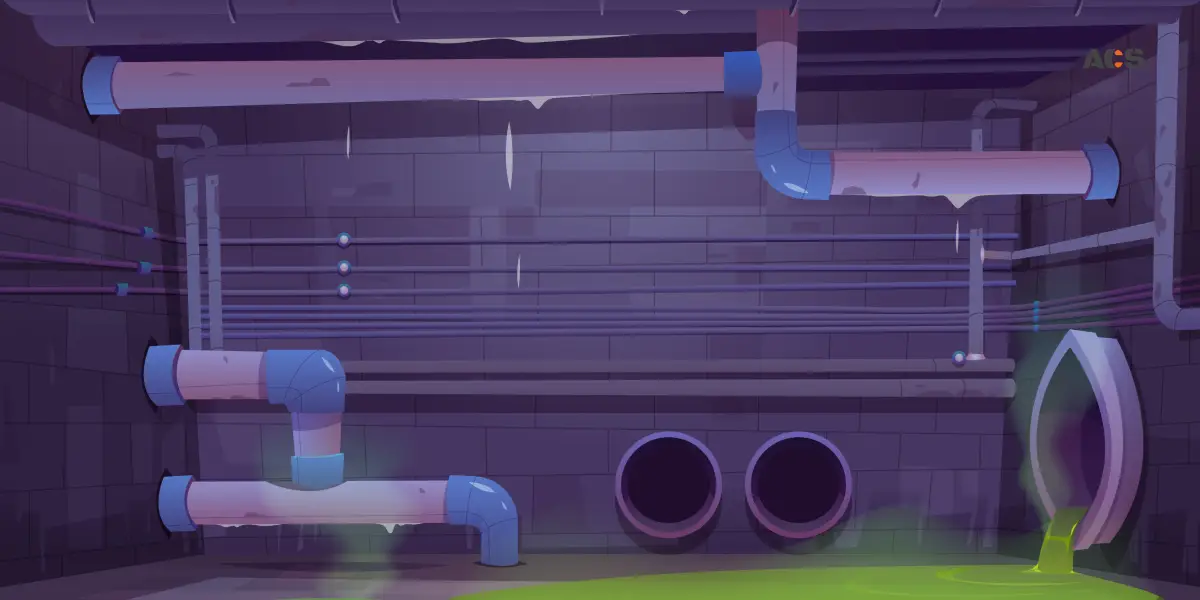Imagine when heavy rain pours down, and streams of water pool on the main roads. Blocked pipes and drains that don’t work. The most immediate impact felt was traffic disruption which caused the roads to be filled with vehicles that were difficult to pass. If it’s like that, you need more time to get to your destination, or look for an alternative vehicle so you can get there faster. Maybe it will be lighter with mitigation measures, one of which is the implementation of a closed drainage system which is known to be effective in urban areas.
A closed drainage system is presented as a solution by utilizing specially designed pipes and drains. Not only does this system help reduce the risk of flooding and damage to infrastructure, it also helps maintain environmental aesthetics. How to? In this article, we will explore how closed drainage systems work and why these solutions are critical for better water management, especially in urban areas.
What is a Closed Drainage System?
A closed drainage system is a method of managing rainwater and waste that uses pipes and closed channels to channel water from the ground surface to the drainage system or main channel. In this system, rainwater, wastewater and other liquids flow through pipes that are not visible on the surface.
The main advantage of a closed drainage system lies in its ability to control water flow effectively and prevent puddles on the surface. The design must also be integrated, so that this system can direct rainwater and waste to the disposal site quickly and efficiently. In addition, this system helps keep the surrounding area clean and tidy, thereby improving aesthetics and comfort.
The use of closed drainage systems is very beneficial in densely populated areas such as cities, highways and commercial areas, where good water management is needed to prevent the negative impacts of uncontrolled flooding. In contrast to open drainage systems which often use open channels and can cause pollution or aesthetic disturbances, closed drainage systems keep all flow in connected pipes, maintaining the cleanliness and visual appearance of the area.
Main Components of a Closed Drainage System
The following are the main components of a closed drainage system that are effectively integrated with each other and keep the environment clean and safe. Anything?
Drainage Pipe
In any type of drainage system, pipes are a vital element in the drainage system. In a closed drainage system, pipes function to channel rainwater, wastewater and other liquids from the ground surface to the drainage system. These pipes are usually made from several types of materials, each with advantages and disadvantages, including:
- PVC pipes are lightweight, easy to install, and resistant to corrosion. Usually for domestic drainage systems and areas with light to medium loads.
- Concrete pipes that have high strength and durability. Suitable for applications in areas with heavy loads or large flow volumes such as highways and industrial areas.
- Metal pipes, such as steel pipes or galvanized pipes, are used in environments that require additional resistance to stress and corrosion.
Inspection Hole
This hole is a hole made as access to the pipe system for inspection and cleaning purposes, as well as ensuring that the system continues to function properly and is free from blockages. Usually located at certain intervals along the pipeline route.
Manholes
The manhole in question is a structure that is larger than an inspection hole, it can also be called a culvert designed to provide easier access to the drainage system for inspection, cleaning and repairs. Manholes are often equipped with retractable covers and are located at strategic points such as pipe junctions or areas with high flow volumes.
Sewer
This channel is part of the drainage system that directs the flow of water from drainage pipes to a final disposal site, such as a river, water channel, or waste disposal system. Designed to accommodate the volume of water flowing from pipes and ensure smooth flow without blockages. Sewers are often equipped with containment systems to reduce the load on the main sewer system and prevent local flooding.
Closed Drainage System Applications
Closed drainage systems have a variety of important applications in a variety of environments to effectively manage water flow and prevent problems associated with waterlogging. Following are some of the main applications of closed drainage systems:
Residential Area
Closed drainage systems in residential areas are usually used to channel rainwater from roads, sidewalks and yards to the drainage system. This flow helps prevent surface water from pooling which can damage roads and property and reduces the risk of flooding. With pipes hidden underground, this system keeps the environment clean and tidy without open drains that can cause odors or become a place for waste to accumulate.
Highways and Transportation Infrastructure
Meanwhile, on roads and transportation areas, closed drainage systems are designed to handle large volumes of water, reducing the risk of inundation which can cause congestion and danger for road users. This system avoids road damage and reduces the risk of accidents due to slippery road conditions.
Industrial area
In industrial areas, closed drainage systems channel wastewater and industrial fluids to the disposal or treatment system. This is important to prevent soil and groundwater contamination. This system is also used to manage rainwater that falls in industrial areas, avoiding puddles that could affect operations and production.
Commercial Area and Shopping Center
In shopping centers and commercial areas, closed drainage systems help manage water flow from parking areas, driveways, and building roofs to keep areas dry and safe for visitors. With a closed drainage system, commercial areas also look cleaner and more orderly without annoying open drains.
Public and Recreational Areas
In public areas such as parks, sports fields, and other recreational areas, closed drainage systems help drain rainwater away from surfaces to prevent pooling and damage to facilities. By keeping areas dry, this system helps ensure comfort for users of public areas, and avoids hazards such as slips or falls.
Thus, closed drainage systems offer a variety of important benefits that support effective and sustainable water management. Implementing a good closed drainage system requires not only careful design, but also regular maintenance to ensure that the system functions optimally. Regular inspection, cleaning, and repair of closed drainage systems is essential to prevent blockages and damage that can reduce water flow efficiency.
As the main component, selecting quality pipes is very important. Metal pipes are the most widely used because they are made from materials that are resistant to corrosion and pressure, ensuring that the drainage system can handle large flow volumes and a variety of environmental conditions without damage. We recommend metal pipes with the GBA brand as a durable and efficient drainage system solution, which you can get easily through ACS. Don’t worry, the GBA products we provide are guaranteed to be original, can be proven by MTC, and meet ASTM standards. Available in various sizes that you can adjust.
Quality pipes not only increase the durability and efficiency of the system, but also reduce the need for frequent maintenance and repairs. Therefore, investing in quality pipes is key to ensuring the long-term success of a closed drainage system and keeping the environment safe, clean, and comfortable.


